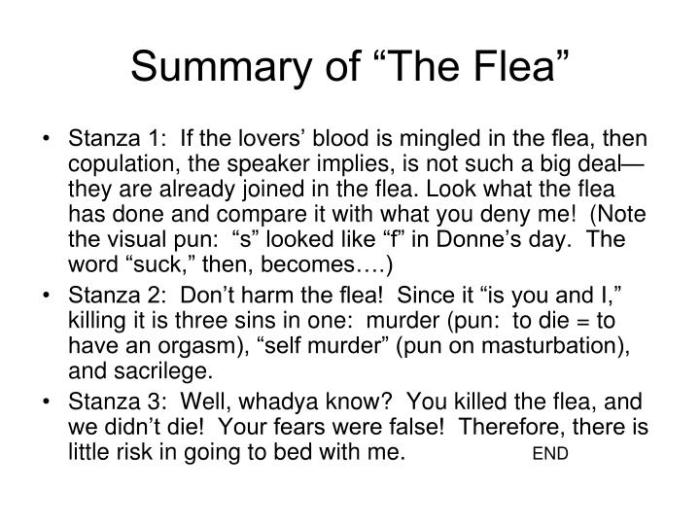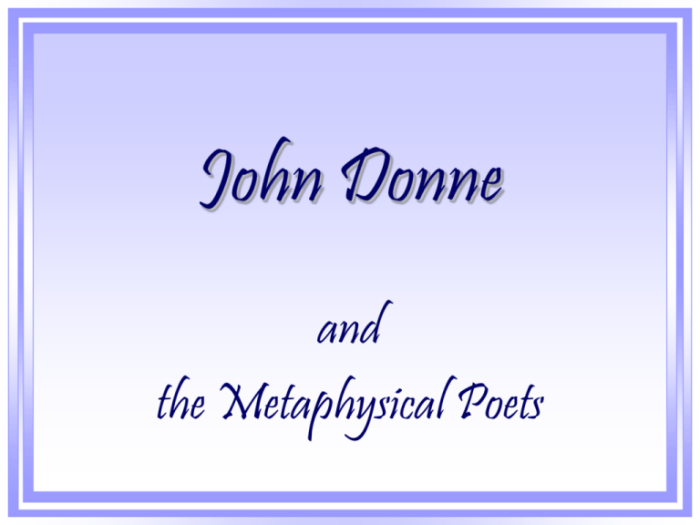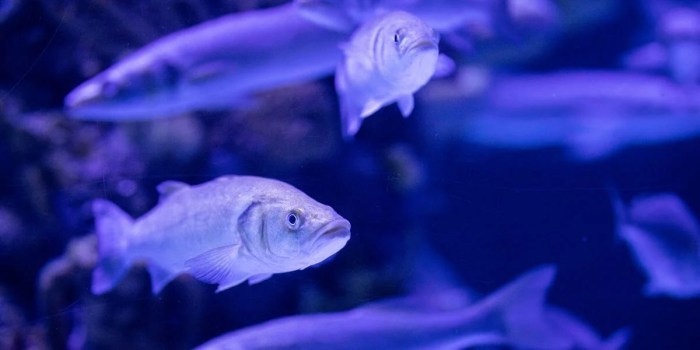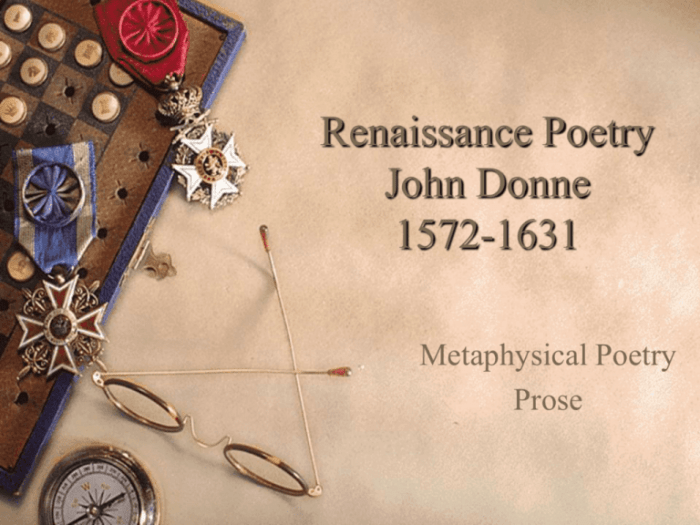The bait john donne analysis – Embark on a captivating journey into John Donne’s “The Bait,” a literary masterpiece that weaves together the metaphors of fishing and seduction to explore the complexities of love, desire, and deceit. Prepare to be enthralled by Donne’s masterful use of imagery and symbolism, as we delve into the poem’s structure, themes, and historical context.
Through a series of insightful observations, we will uncover the interplay between passion and deception, examining how Donne’s words resonate with our own experiences of love’s allure and its potential pitfalls.
Contextual Overview

John Donne, a prominent figure in English literature of the 17th century, is renowned for his profound metaphysical poetry. His works often explore complex themes of love, faith, and mortality, employing intricate metaphors and unconventional imagery.
“The Bait,” one of Donne’s most celebrated poems, exemplifies his distinctive style. It is a complex and enigmatic work that encapsulates Donne’s preoccupation with the paradoxes of love and the human condition.
Significance of “The Bait”, The bait john donne analysis
Within Donne’s body of work, “The Bait” holds a significant position. It is considered a pivotal piece that showcases his mastery of metaphysical conceits and his ability to craft poems that are both intellectually stimulating and emotionally resonant.
The poem’s central metaphor, equating love to a fishing expedition, has become a cornerstone of Donne’s literary legacy. This conceit allows Donne to explore the complexities of love through the lens of a familiar and relatable activity, making the poem accessible to a wide audience while still delving into profound philosophical questions.
Metaphorical Exploration

Donne employs an extended metaphor of fishing and seduction to convey his complex and nuanced ideas about love and desire. The speaker, a seasoned angler, casts his “heart-bait” into the “stream” of the beloved’s affections, hoping to catch her.
Imagery and Symbolism
Donne’s imagery is vivid and evocative, creating a sensual and tangible world. The “bait” of his heart is a physical representation of his desire, while the “stream” of the beloved’s affections is a metaphor for her elusive and unpredictable nature.
The “fish” that the speaker seeks to catch symbolizes the woman he desires, who is both alluring and potentially dangerous.
Themes and Motifs
John Donne’s “The Bait” is a complex and multi-layered poem that explores various themes and motifs. These elements intertwine to create a rich and nuanced tapestry of meaning, inviting readers to contemplate the nature of love, desire, and deceit.
Interplay of Love, Desire, and Deceit
The poem delves into the intricate interplay between love, desire, and deceit. The speaker, who initially appears as a guide offering advice to potential lovers, gradually reveals his true intentions. Through the use of cunning language and persuasive imagery, he seeks to lure unsuspecting individuals into a trap of unfulfilled desires.
- The speaker’s language is alluring and seductive, promising pleasure and satisfaction. However, this promise is ultimately revealed to be a facade, as the speaker’s true intentions are revealed.
- The poem’s imagery reinforces the theme of deceit. The speaker compares the lover to a fish, suggesting that they are being lured into a trap.
- The speaker’s use of the word “bait” is significant. Bait is typically used to attract and capture fish, and in this poem, it represents the speaker’s attempt to attract and deceive the reader.
Structure and Form: The Bait John Donne Analysis

John Donne’s “Bait” is a 12-line poem composed of three stanzas, each with a distinct rhyme scheme. The first stanza introduces the speaker’s plea to his beloved, using the metaphor of a fish caught on a hook. The second stanza further develops the fishing metaphor, describing the speaker’s efforts to capture the woman’s attention and affection.
The third stanza concludes with a shift in tone, as the speaker expresses his desperation and willingness to endure pain for love.
Rhyme Scheme
The rhyme scheme of “Bait” follows a consistent pattern of ABAB CDCD EFEF. This interlocking rhyme scheme creates a sense of rhythm and cohesion throughout the poem, enhancing its memorability and musicality. The use of end rhymes also emphasizes the connections between the lines, reinforcing the speaker’s emotional intensity and the urgency of his plea.
Stanzas
The division of the poem into three stanzas reflects the progression of the speaker’s thoughts and emotions. The first stanza establishes the fishing metaphor and introduces the speaker’s desire to capture the woman’s love. The second stanza elaborates on the metaphor, describing the speaker’s attempts to attract her attention.
The third stanza marks a shift in tone, as the speaker expresses his willingness to endure pain for love.
Form and Meaning
The form of “Bait” contributes significantly to its overall meaning. The use of the fishing metaphor conveys the speaker’s desperation and his belief that love is a game of chance. The interlocking rhyme scheme and the division into three stanzas reinforce the speaker’s emotional intensity and the urgency of his plea.
The poem’s brevity and conciseness further emphasize the speaker’s desperation and his willingness to endure pain for love.
Literary Devices
John Donne employs various literary devices in “Bait” to enhance its complexity and depth. These devices include paradox, irony, and ambiguity.
Paradox
Donne uses paradox to create a sense of tension and surprise in the poem. For instance, the speaker declares, “I can love her, and yet be true to thee.” This statement is paradoxical because it suggests that the speaker can love two people simultaneously, which is traditionally seen as impossible.
Irony
Irony is another literary device that Donne uses to create a sense of tension in the poem. For example, the speaker states, “I have done a deed, whereat the world will start.” This statement is ironic because the speaker’s actions are not as shocking or significant as he believes.
Ambiguity
Donne also uses ambiguity to create a sense of mystery and uncertainty in the poem. For instance, the speaker’s motives for betraying his lover are unclear. He states, “I have done a deed, whereat the world will start.” However, he does not provide any further explanation for his actions.
These literary devices contribute to the poem’s complexity and depth by creating a sense of tension, surprise, and uncertainty. They force the reader to question the speaker’s motives and to consider the poem’s meaning on multiple levels.
Historical and Cultural Context

John Donne wrote “The Bait” during the Elizabethan era, a time of significant social and intellectual change in England. The poem reflects the complex religious, political, and philosophical debates of the period.
Religious Context
The Protestant Reformation had recently challenged the authority of the Catholic Church, leading to religious turmoil and persecution. Donne’s poem grapples with the tensions between traditional Catholic beliefs and the emerging Protestant ideas.
Political Context
England was ruled by Queen Elizabeth I, a Protestant monarch who faced both internal and external threats to her authority. “The Bait” alludes to the political and religious conflicts of the time, particularly the struggle between the Protestant establishment and the Catholic minority.
The Bait by John Donne is a poem that explores the themes of love, desire, and temptation. The speaker of the poem is a man who is trying to resist the advances of a woman, but he is ultimately unable to do so.
The poem is full of vivid imagery and sensual language, and it has been praised for its beauty and its psychological insight. The poem’s exploration of the themes of love, desire, and temptation make it relevant to many people, and it continues to be studied and enjoyed today.
If you’re interested in learning more about the poem, you can find a bio or chem crossword clue that will help you understand the poem’s meaning and significance.
Intellectual Climate
The Renaissance had sparked a renewed interest in classical learning and humanism. Donne’s poem demonstrates his familiarity with ancient Greek and Roman literature, as well as his fascination with the complexities of human nature.
Critical Reception

John Donne’s “The Bait” has garnered a wide range of critical interpretations over the centuries. Initially, the poem was met with mixed reactions, with some critics praising its wit and ingenuity while others found it too obscure and artificial.
In the 19th century, the poem underwent a critical reevaluation, with critics such as T.S. Eliot and F.R. Leavis recognizing its importance as a precursor to modernism. They praised the poem’s exploration of complex emotions and its use of unconventional imagery and metaphors.
Modern Interpretations
Contemporary criticism continues to engage with “The Bait,” offering new perspectives on its themes and meanings. Some critics have explored the poem’s homoerotic subtext, while others have focused on its religious and philosophical implications.
- Homoerotic Interpretation:Critics such as Jonathan Goldberg and John Kerrigan have argued that the poem’s language and imagery suggest a homoerotic desire between the speaker and the fish.
- Religious Interpretation:Some critics see the poem as an allegory of the soul’s journey to God. The fish represents the soul, while the bait represents the allure of worldly pleasures.
- Philosophical Interpretation:Other critics have interpreted the poem as a meditation on the nature of truth and deception. The fish’s beauty and danger symbolize the difficulty of discerning between appearance and reality.
Q&A
What is the significance of the fishing metaphor in “The Bait”?
The fishing metaphor serves as an extended analogy for the speaker’s pursuit of love. The speaker portrays himself as a fisherman, using bait to lure a fish, just as he uses his words to attract a potential lover.
How does Donne use imagery and symbolism to convey his ideas?
Donne employs vivid imagery, such as the “fish” and the “bait,” to create a sensory experience for the reader. He also uses symbolism, such as the “hook” representing the speaker’s desire to capture the object of his affection.
What are the major themes explored in “The Bait”?
The poem explores themes of love, desire, and deceit. The speaker’s pursuit of love is portrayed as a battle of wits, with both the speaker and the object of his affection trying to outsmart each other.
